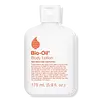What's inside
What's inside
 Key Ingredients
Key Ingredients

 Benefits
Benefits

 Concerns
Concerns

 Ingredients Side-by-side
Ingredients Side-by-side

Water
Skin ConditioningDimethicone
EmollientIsopropyl Palmitate
EmollientEthylhexyl Cocoate
EmollientIsododecane
EmollientIsopropyl Myristate
EmollientUrea
BufferingPolyglyceryl-2 Dipolyhydroxystearate
Skin ConditioningGlycerin
HumectantPentylene Glycol
Skin ConditioningDicaprylyl Carbonate
EmollientPolyglyceryl-3 Diisostearate
EmulsifyingSodium Lactate
BufferingDipentaerythrityl Hexacaprylate/Hexacaprate
EmulsifyingGluconolactone
Skin ConditioningRosa Canina Fruit Oil
EmollientSimmondsia Chinensis Seed Oil
EmollientCalendula Officinalis Extract
Skin ConditioningButyrospermum Parkii Oil
EmollientHelianthus Annuus Seed Oil
EmollientGlycine Soja Oil
EmollientIsostearyl Isostearate
EmollientBisabolol
MaskingOctyldodecyl PCA
EmollientRetinyl Palmitate
Skin ConditioningTocopheryl Acetate
AntioxidantLinoleic Acid
CleansingLinolenic Acid
CleansingTocopherol
AntioxidantSodium PCA
HumectantSodium Hyaluronate
HumectantLactic Acid
BufferingStearalkonium Hectorite
Gel FormingPropylene Carbonate
SolventWater, Dimethicone, Isopropyl Palmitate, Ethylhexyl Cocoate, Isododecane, Isopropyl Myristate, Urea, Polyglyceryl-2 Dipolyhydroxystearate, Glycerin, Pentylene Glycol, Dicaprylyl Carbonate, Polyglyceryl-3 Diisostearate, Sodium Lactate, Dipentaerythrityl Hexacaprylate/Hexacaprate, Gluconolactone, Rosa Canina Fruit Oil, Simmondsia Chinensis Seed Oil, Calendula Officinalis Extract, Butyrospermum Parkii Oil, Helianthus Annuus Seed Oil, Glycine Soja Oil, Isostearyl Isostearate, Bisabolol, Octyldodecyl PCA, Retinyl Palmitate, Tocopheryl Acetate, Linoleic Acid, Linolenic Acid, Tocopherol, Sodium PCA, Sodium Hyaluronate, Lactic Acid, Stearalkonium Hectorite, Propylene Carbonate
Water
Skin ConditioningGlycerin
HumectantPropanediol
SolventIsopropyl Myristate
EmollientHydroxyethyl Urea
HumectantEthylhexyl Olivate
Skin ConditioningSqualane
EmollientSodium PCA
HumectantHydrogenated Lecithin
EmulsifyingPolyglutamic Acid
Skin ConditioningGlyceryl Oleate
EmollientCeramide NP
Skin ConditioningPalmitic Acid
EmollientPCA
HumectantEthylhexyl Palmitate
EmollientPolyglyceryl-10 Stearate
Skin ConditioningSaccharide Isomerate
HumectantTriethyl Citrate
MaskingSerine
MaskingAlanine
MaskingGlycine
BufferingGlutamic Acid
HumectantLysine Hcl
Skin ConditioningThreonine
Arginine
MaskingTocopherol
AntioxidantCeramide As
Skin ConditioningCeramide Ns
Skin ConditioningProline
Skin ConditioningCeramide EOP
Skin ConditioningCeramide AP
Skin ConditioningAmmonium Acryloyldimethyltaurate/Vp Copolymer
Phenoxyethanol
PreservativeUndecane
EmollientHydroxyacetophenone
AntioxidantXanthan Gum
EmulsifyingTridecane
PerfumingSodium Stearoyl Glutamate
CleansingSodium Phytate
Citric Acid
BufferingBetaine
HumectantSodium Citrate
BufferingSodium Lactate
BufferingWater, Glycerin, Propanediol, Isopropyl Myristate, Hydroxyethyl Urea, Ethylhexyl Olivate, Squalane, Sodium PCA, Hydrogenated Lecithin, Polyglutamic Acid, Glyceryl Oleate, Ceramide NP, Palmitic Acid, PCA, Ethylhexyl Palmitate, Polyglyceryl-10 Stearate, Saccharide Isomerate, Triethyl Citrate, Serine, Alanine, Glycine, Glutamic Acid, Lysine Hcl, Threonine, Arginine, Tocopherol, Ceramide As, Ceramide Ns, Proline, Ceramide EOP, Ceramide AP, Ammonium Acryloyldimethyltaurate/Vp Copolymer, Phenoxyethanol, Undecane, Hydroxyacetophenone, Xanthan Gum, Tridecane, Sodium Stearoyl Glutamate, Sodium Phytate, Citric Acid, Betaine, Sodium Citrate, Sodium Lactate
 Reviews
Reviews

Alternatives
Ingredients Explained
These ingredients are found in both products.
Ingredients higher up in an ingredient list are typically present in a larger amount.
Glycerin is already naturally found in your skin. It helps moisturize and protect your skin.
A study from 2016 found glycerin to be more effective as a humectant than AHAs and hyaluronic acid.
As a humectant, it helps the skin stay hydrated by pulling moisture to your skin. The low molecular weight of glycerin allows it to pull moisture into the deeper layers of your skin.
Hydrated skin improves your skin barrier; Your skin barrier helps protect against irritants and bacteria.
Glycerin has also been found to have antimicrobial and antiviral properties. Due to these properties, glycerin is often used in wound and burn treatments.
In cosmetics, glycerin is usually derived from plants such as soybean or palm. However, it can also be sourced from animals, such as tallow or animal fat.
This ingredient is organic, colorless, odorless, and non-toxic.
Glycerin is the name for this ingredient in American English. British English uses Glycerol/Glycerine.
Learn more about GlycerinIsopropyl Myristate is an emollient, thickening agent, and texture enhancer. It is created from isopropyl alcohol and myristic acid.
It is used to help other ingredients be better absorbed. It is also an emollient and may help soften and hydrate the skin.
The comedogenic rating of this ingredient depends on the concentration. Lower amounts results in a lower rating.
Isopropyl Myristate may not be fungal acne safe. It can potentially worsen acne prone skin.
Learn more about Isopropyl MyristateSodium Lactate is the sodium salt of lactic acid, an AHA. It is a humectant and sometimes used to adjust the pH of a product.
This ingredient is part of our skin's NMF, or natural moisturizing factor. Our NMF is essential for the hydration of our top skin layers and plasticity of skin. NMF also influences our skin's natural acid mantle and pH, which protects our skin from harmful bacteria.
High percentages of Sodium Lactate can have an exfoliating effect.
Fun fact: Sodium Lactate is produced from fermented sugar.
Learn more about Sodium LactateSodium PCA is the sodium salt of pyroglutamic acid. It is naturally occurring in our skin's natural moisturizing factors where it works to maintain hydration.
The PCA stands for pyrrolidone carboxylic acid, a natural amino acid derivative.
This ingredient has skin conditioning, anti-inflammatory, and humectant properties. Humectants help hydrate your skin by drawing moisture from the air. This helps keep your skin moisturized.
Learn more about Sodium PCATocopherol (also known as Vitamin E) is a common antioxidant used to help protect the skin from free-radicals and strengthen the skin barrier. It's also fat soluble - this means our skin is great at absorbing it.
Vitamin E also helps keep your natural skin lipids healthy. Your lipid skin barrier naturally consists of lipids, ceramides, and fatty acids. Vitamin E offers extra protection for your skin’s lipid barrier, keeping your skin healthy and nourished.
Another benefit is a bit of UV protection. Vitamin E helps reduce the damage caused by UVB rays. (It should not replace your sunscreen). Combining it with Vitamin C can decrease sunburned cells and hyperpigmentation after UV exposure.
You might have noticed Vitamin E + C often paired together. This is because it is great at stabilizing Vitamin C. Using the two together helps increase the effectiveness of both ingredients.
There are often claims that Vitamin E can reduce/prevent scarring, but these claims haven't been confirmed by scientific research.
Learn more about TocopherolWater. It's the most common cosmetic ingredient of all. You'll usually see it at the top of ingredient lists, meaning that it makes up the largest part of the product.
So why is it so popular? Water most often acts as a solvent - this means that it helps dissolve other ingredients into the formulation.
You'll also recognize water as that liquid we all need to stay alive. If you see this, drink a glass of water. Stay hydrated!
Learn more about Water